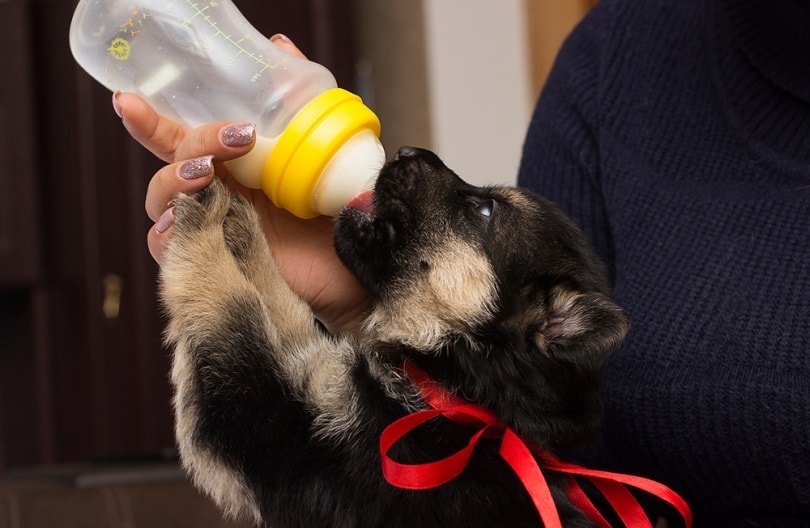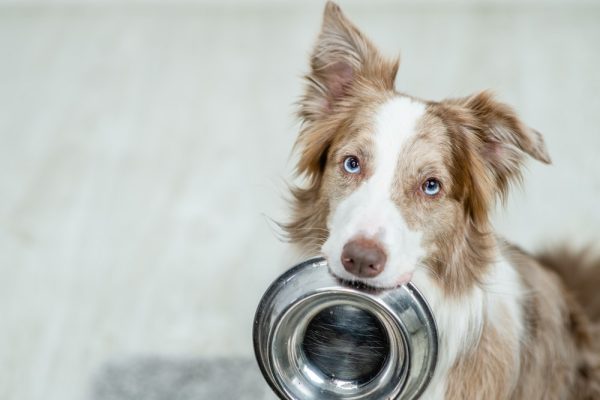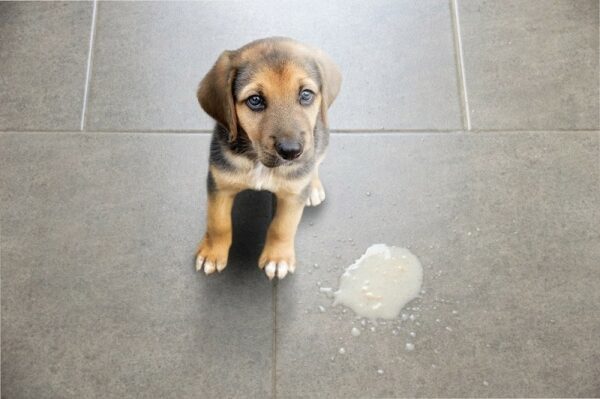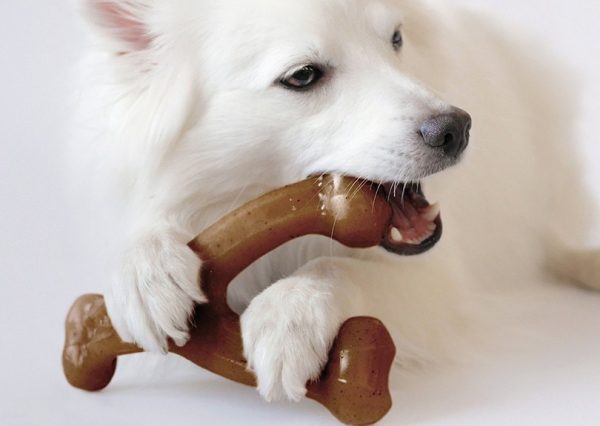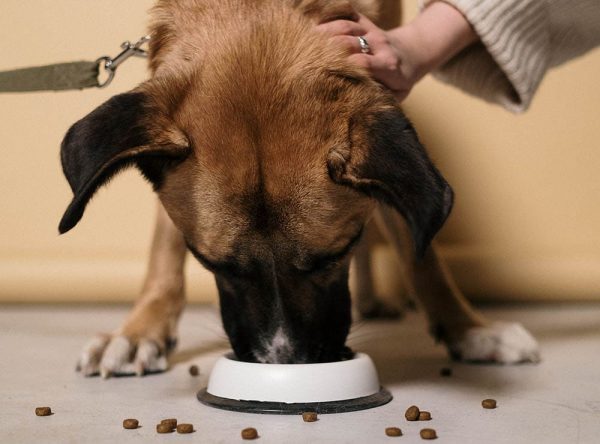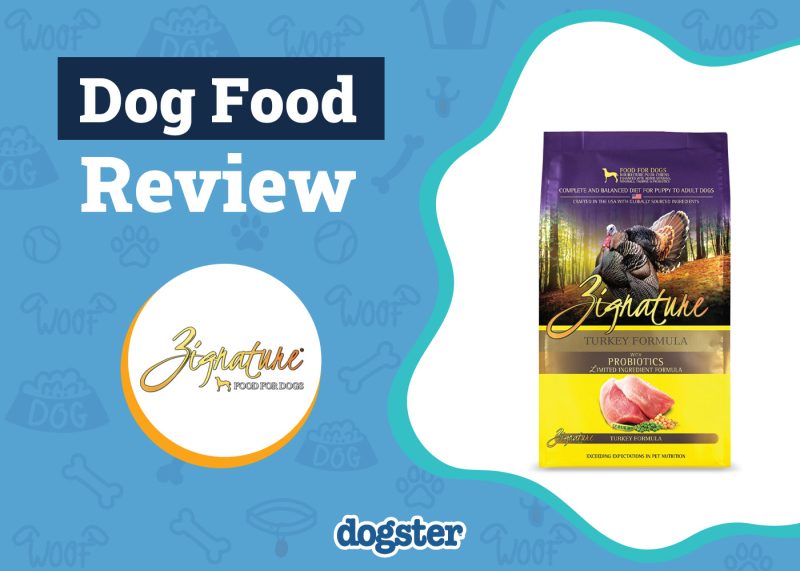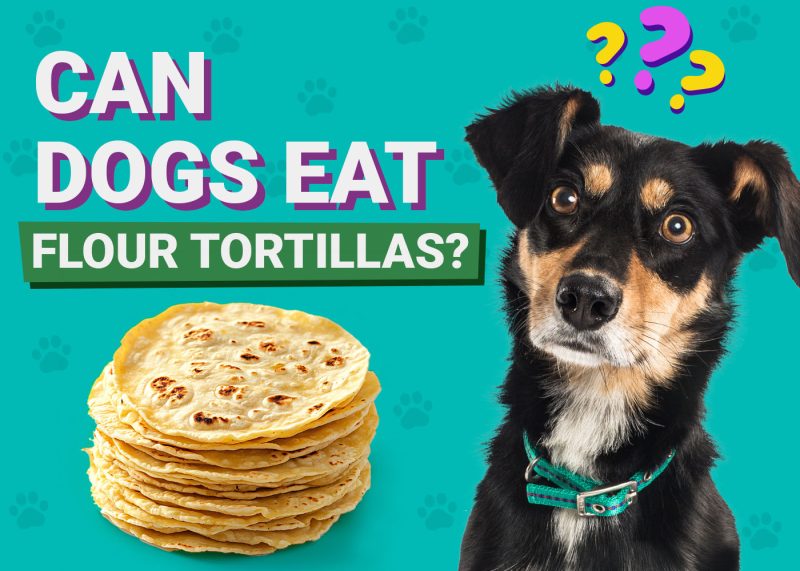Caring for a newborn litter of pups is exciting and rewarding. At times, it may feel like a full-time job, but we can assure you it’s all worth it! Compared to some other species of mammal, puppies are born fairly vulnerable or “immature”. If a puppy is unable to feed from its mother, it is considered an orphan, and some important needs must be met. Of these needs, nutrition is arguably the most important, and one way of providing this nutrition is by bottle feeding.
This article will give you a step-by-step guide to bottle-feeding puppies, from choosing the right puppy milk to ensuring the milk makes it out the other end.

When Does a Puppy Need Bottle Feeding?
There are a few different reasons why a puppy might require bottle feeding. These include:
- Illness or death of the mother
- Rejection by the mother
- Inadequate milk production by the mother
- Large litter of pups with lots of sibling competition

The 9 Steps to Bottle Feeding a Puppy the Right Way
1. Find the Right Milk Replacer
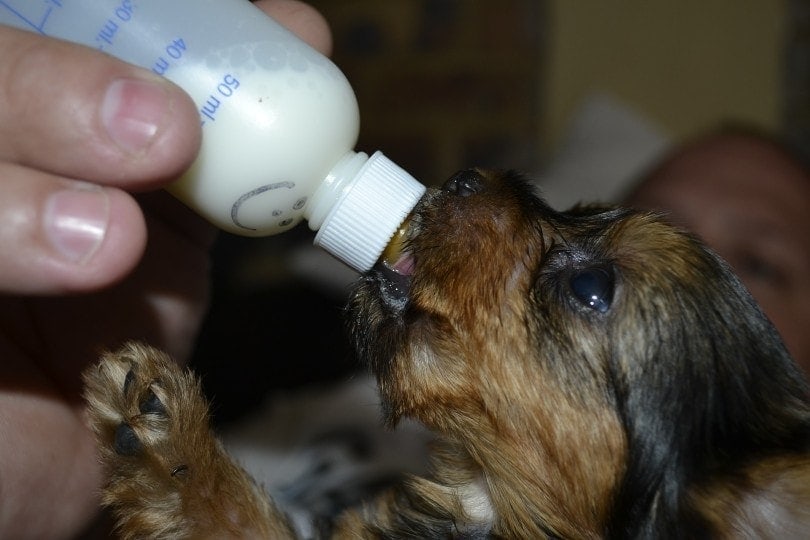
First things first, cow’s milk is not a suitable milk replacement for puppies. Milk from a puppy’s mother contains twice as much protein as cow’s milk, so a puppy raised on cow’s milk will be lacking in protein. Puppy milk replacer should contain:
- 31–33% protein
- 42% fat content
There are lots of puppy milk substitutes on the market, but make sure you check the composition to ensure it meets the above criteria. We’ve recommended two great options below, but if you’re unsure what to go for, always be guided by a veterinarian.
2. Calculate the Correct Volume to Feed
Your commercial puppy milk replacer will tell you how much of this formula your puppy needs in a single day. The other thing to consider here is fluid intake. Puppies need 6 ounces of fluid per kilogram of body weight each day. The following steps tell you how to calculate how much to feed an orphan puppy at each meal:
- Calculate fluid volume required each day
- 6 ounces fluid x puppy weight (in kilograms) = volume of puppy milk required per day
- Divide this volume by five, as puppies need five meals per day
- Total required volume ÷ 5 = volume of puppy milk per feed
As an example, let’s take a puppy that weighs 500 grams, which is 0.5 kilograms.
- 6oz x 5 kg = 3 ounces of puppy milk total per day
- 3oz ÷ 5 = 0.6 ounces of puppy milk per feed
So, this 500g puppy should receive 0.6oz (18mL) of puppy milk five times per day.
Another option is to follow the instructions for feeding that are provided on the milk-replacer packaging or instruction leaflet. Although not as accurate as the above calculations, it is likely to be adequate for most puppies.
3. Clean All Feeding Equipment

All bottles and artificial nipples/teats should be cleaned and then boiled in water prior to their first use, and again between uses. This process essentially sterilizes them, as bacteria grow quickly on warm or dried-up puppy milk.
4. Prepare and Warm the Puppy Milk Replacer
Always mix the milk replacer with fresh tap water, and always do this by hand (not in a blender or food processor).
It’s best to prepare only enough milk replacer to last a single day. Any milk replacer not used in a 24-hour period should be discarded and made up fresh the next day. So, for the puppy in the example, make up 3–4 ounces of puppy milk (accounting for a small amount of wastage) and store it in the fridge.
When feeding, warm the milk to 100°F. This can be done by placing the sealed bottle of puppy milk in a bowl of warm/hot water. Check the temperature by applying a few drops to your skin; if it feels too hot, allow it to cool a bit before bottle-feeding.
TIP: Store puppy milk in the fridge between uses, and heat up the required amount at feeding time.
5. Check the Rate of Flow
When you place a few drops on your skin to check the milk temperature, you can also check the flow through the pierced teat-end of the bottle. Milk should only come out one drop at a time. If it is flowing out in a stream, this is too fast, and your puppy will be at risk of aspirating (accidentally inhaling some milk into the lungs). If milk flow is too slow, try to increase the size of the pierced opening to make it easier for your puppy to suckle.
6. Position Your Puppy for Feeding

Orphan puppies should always be bottle-fed in an upright position, lying on their belly. Hold your puppy in a horizontal position with one hand, keeping their neck as straight or “neutral” as possible. This closely simulates the position they would naturally assume when feeding from their mother.
TIP: If your puppy is too weak to suckle, consult a veterinarian to discuss other feeding options, such as tube feeding.
Did you know you can speak to a veterinarian without having to travel? Just head over to PangoVet. It's an online service where you can talk to a vet online and get the advice you need for your pet — all at an affordable price!

7. Bottle-Feed Your Puppy the Calculated Amount
Gently bring the teat-end/nozzle to your puppy’s mouth, and ensure they have “latched on.”
Be slow and steady when delivering the milk replacer to your puppy. You don’t need to squeeze the bottle, as your puppy’s suckling will generate enough pressure. Be patient, and if this takes a few attempts, or if your puppy requires some “rest breaks”, this is completely fine.
Feed the amount that you calculated in Step 2, and then stop. If your puppy is feeding well, this doesn’t mean you should continue to feed them, as their small stomach can only fit so much in one meal.
TIP: Keep a logbook of your puppy’s meals to ensure they’ve received them all. Also, keep a log of their weight every day—this should increase by about 5% each day.
8. Stimulate Your Puppy to Defecate
Puppies are unable to eliminate (urinate or defecate) of their own accord until they are around 3 weeks old. This job is normally aided by the puppy’s mother, but it may become your responsibility as the pup’s new caretaker.
To do this, gently stroke the area under the tail after each meal. It often helps to use a warm, moist cotton ball or cloth.
9. Repeat Every 2–4 Hours
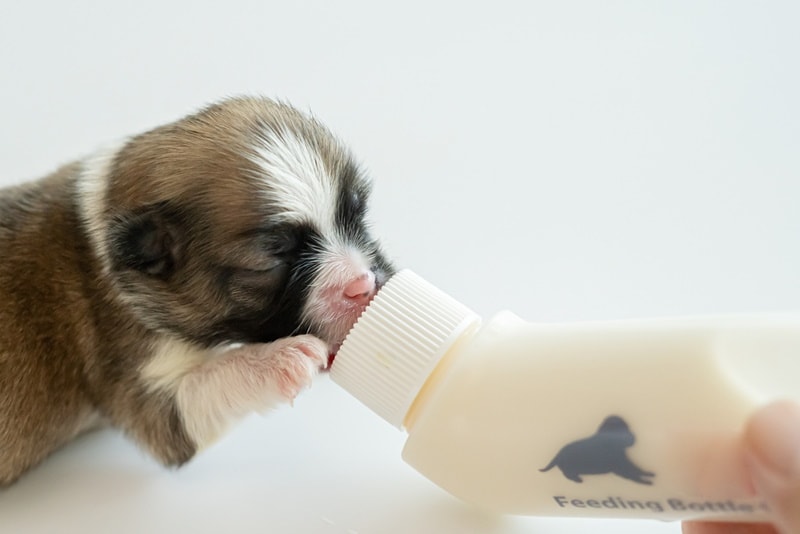
Puppies should be fed every 2–4 hours. This varies according to breed, age, and what you can practically do as their caretaker. See the following guide to a good feeding schedule below:
- 8 am
- 12 pm (noon)
- 4 pm
- 8 pm
- 12 am (midnight)
Most puppies will be fine from midnight to 8 am if they have received enough nutrition over the course of the day, but if you are concerned about this, discuss the situation with a veterinarian.

Frequently Asked Questions
What Should I Do if My Puppy Is Having Difficulty with the Bottle?
If your puppy is having a hard time bottle-feeding, arrange a consultation with a veterinarian. They’ll check your puppy over to make sure there are no mouth or lip abnormalities stopping them from feeding. They’ll also give you some tips and may demonstrate how to tube-feed for the first week or two.
I’ve Heard About Colostrum. What is it?
Colostrum is the thick, rich milk that mothers produce in their first few days of lactation. This milk has lots of antibodies that the puppy uses to stay healthy while their immune system is still developing. Colostrum is very important, so puppies should always be encouraged to suckle from their mother for the first 24–48 hours of their life. However, even if this is not possible, most puppies can be successfully orphaned with good care—nutrition, toileting, warmth, hygiene, and de-worming.
When Can I Start Weaning My Puppy onto Solid Food?
The weaning process generally starts at 3 weeks of age by introducing small amounts of soft high-quality puppy food, while continuing to bottle feed. The transition to solid food should be complete by 6 weeks of age.

Conclusion
Orphaning puppies is extremely rewarding. With good attention to detail, lots of love, and some guidance from a veterinarian, most puppies can be successfully orphaned and go on to live fully, happy lives. Nutrition is very important, so use the above guide to ensure you get bottle-feeding right. And if you are concerned about your puppy’s health or well-being at any point, don’t hesitate to contact a veterinarian.
See also:
Featured Image Credit: Happy monkey, Shutterstock
